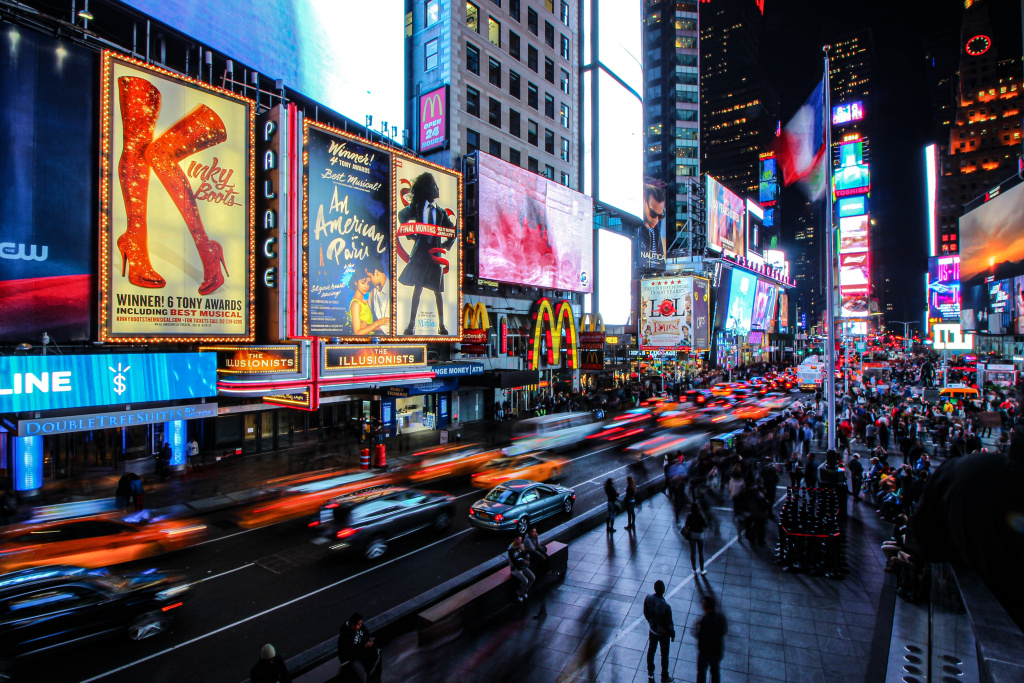Commercial Brands as a Soft Power Tool
In
Log in if you are already registered
A state’s international image is its main “soft power” attribute. By developing this well-known concept, countries can create prospects for national investment, and therefore wealth for their country. Nowadays, commercial brands may constitute a powerful tool in the hands of diplomats, who bet on using soft power as a means to exert their nation’s ideological influence onto other states and their people.

Source: Unsplash
The concept of soft power is often used today in the sphere of international relations as a public policy tool. The term was coined by American researcher Joseph Nye in 1990 in his book, “Bound to Lead: The Changing Nature of American Power”. Nye claims that culture plays an important role in foreign policy, which is not surprising because while it is possible to change the economy and political course of a country, it is quite difficult to change its culture. The cultural nature of conflict is a source of global contradictions. In “The Clash of Civilizations and Remaking of the World Order”, renowned political scientist Samuel Huntington concludes that the clash of civilizations will be the main cause of international confrontations based on differences in culture, religion and traditional values.
Through the concept of soft power, an “attractive” image of a secular and prosperous state is promoted in order to “tactically” influence other countries and their people. As Joseph Nye simply explained, soft power is the ability “to make others want what you want.”
An engaged and educated society, advanced technology, developed infrastructure, protected cultural heritage, high level of social support for the state, and active country involvement in tackling global issues on the sustainable development agenda are the strongest elements of a country's soft power.
The commercial sector is heavily influenced by this concept, and corporations and states have the potential to control the masses through major brands as leverage.
Not Everyone Benefits from Globalization
The phenomenon that is “globalization” can also be used by some governments as an excuse to violate the sovereignty of other states. They play the “globalization” card and use it as an argument against any country that is not prepared to cooperate on an issue in their unipolar sphere of interest.
Countries interested in spreading their production without considering the national needs and values of other cultures and perceive the world as a “one featureless market”, are the first to benefit from globalization and the blurring of cultural boundaries. Many countries therefore limit the impact this has on their citizens, trying to protect them from an imposed value system that wipes out historical memory and cultural identity, that is so emphatically defended by UNESCO as “living heritage”. China's internet policy, “The Great Firewall of China”, is a clear example of such protection measures in practice. Considering the uncomfortable technological sophistication that China has achieved for several countries, internet policy has become primarily a matter of security.
Additionally, Chinese national television focuses on broadcasting picturesque landscapes and the beauty of its great culture, encouraging the Chinese population to value nature, as well as domestic tourism, rather than simply showing endless commercials for industrial products. China is the only civilization in the world that has not interrupted its development by succumbing to other, notably Western, soft power influences. Today, China strives to carefully pass down its world-view ideas across generations, one of which being “āntǔ-zhòngqiān” (or love of homeland and unwillingness to leave it).
Almost Everyone Today is a customer
Today, the big commercial brands are geared towards a global community in which almost everyone has purchasing power. Year after year, despite a myriad of global challenges, the world population is making tremendous progress in terms of living standards.
In April 2022, the World Bank updated its global poverty estimates for 2018 (prior to the Covid-19 pandemic) on the new Poverty and Inequality Platform (PIP), showing that global poverty rates (those living below a daily income of $1.90) was 8.6%, down from 2017’s 9.1%. In other words, this is equivalent to 28 million people pulled out of poverty in over two years. Comparing earlier periods, the global poverty rate fell by 4.3% between 2012 and 2018.
People today live better than have before, which means they buy more. However, the impact commercial brands play in shopper purchases goes far beyond the numbers.
Brand with a Human Face
Today we are witnessing brand humanization with 24/7 customer feedback. No longer is the aim of big trading companies to enter into a money-for-good relationship with its customers, but rather it is to gain customer loyalty and, if necessary, change political and social attitudes.
According to the American psychologist Abraham Maslow's pyramid of needs, people need to belong to a social group through which they can feel valued. Commercial brands don't miss a chance to take advantage of that.
Major sportswear companies are offering free membership to a community of brand enthusiasts, encouraging them to become a part of a global community that is recreating the future of sport. But beyond this noble goal, there is a purely commercial one: successful sales are the foundation of any company's development.
What's more important is that every major brand has digital platforms. Brand social media pages are turning into full-fledged media outlets, engaging major magazines that produce news and set the agenda for the brand. Commercial brands are trying to focus on sensitive global issues in a bid to appeal to different social groups, from exclusively female audiences to devout environmentalists.
For example, the American brand “Dove” is developing a “Self-Esteem Project” with the slogan “Stop the Beauty Test”, which works with issues of self-perception and anxiety reduction that cannot but find support among today's women.
Major retail chains are creating clothing lines out of recycled plastic. Certainly, some companies are keen to contribute to the environment, but commercial brands exist on sales and by creating a line based on recycled plastic, brands mentally reinforce customers the belief that they are not just consuming a good, but saving the planet, even if the recycled plastic makes up 5% of the item; that matter takes a back seat.
Commercial Brands Polish the Soft Power of States
It is not so much the products that the big commercial brands are capturing audiences with, but rather the lifestyle; they offer comfortable terms of purchase, instant delivery and generous discounts, which is difficult for local businesses and local manufacturers to compete with, affecting the country's economy. The authentic “made in” products of a strong brand produce positive perceptions of the country and vice versa. When we buy water, food, a car, or clothes from a country, we create an association with the country where they are produced.
In this way, big brands turn the country itself into a brand, attracting investors, businessmen, and immigrants, among them promising scientists and young minds, whose work shapes the country's economy and its status as a world active leader, desirable partner, and ally.
Additionally, company websites collect user data in thematic surveys that are used to analyze the lifestyles and purchasing power levels of people in other countries in order to subsequently adapt products. Public demand influences import and export policies of states, and commercial brands play into that.
The international image of any state is the main attribute of its “soft power”. The market research company “FutureBrand”, a brand-transforming business, developed the “FutureBrand Country Index”, which measures the “attractiveness” quotient of a country in terms of public perception, examining consumer or corporate brands through surveys and scientific data analysis techniques. The top three in 2020 are Japan, Switzerland and Norway. According to respondent country brand associations, the top performers in Japan were “Toyota” and “Uniqlo”; “Tissot”, “Rolex”, and “Swatch” in Switzerland; and “Neutrogena” and “Statoil” in Norway.
Country as a Brand
The UN's 2022 annual World Happiness Report, Denmark earned second place for home to the world’s happiest people, with Finland taking first. Human happiness cannot be measured by quantitative methods, but Mike Wiking from Denmark founded the Happiness Research Institute, which studies people's quality of life and satisfaction with their daily lives using scientific methods. According to the Institute, governments and civil society organizations are eager to collaborate in order to apply collected data to public policy, and make the lives of their citizens better.
A few years ago, the world seemed obsessed with the Danish concept of “Hygge” (happiness in Danish), which became the basis for many business ideas for Danish decor, furniture, and clothing brands. The country even became an attractive destination for potential immigration. This is just one example of how people do not buy a product, but a lifestyle.
National Branding Can Help Developing Economies
The pandemic has particularly weakened the economies of countries with tourism as their main source of income. Turning a country into a brand can help countries with dwindling economic potential and save jobs at a time of crisis, as digital technology allows countries to create successful PR campaigns.
At the “World Conference on Tourism Cooperation and Development”, organized by the World Tourism Cities Federation as part of the “China International Fair for Trade in Services” forums in September 2022, representatives from Africa and the Caribbean outlined strategies for recovering tourism after the pandemic. One successful example of country branding were the Seychelles Islands, which during lockdown created a platform with the slogan “Dream Now and Experience Later.” The resource contained high-quality photos and videos introducing the country online and, once the lockdown was over, the creators invited people to visit the islands to experience the real thing.
Power Is Also Like Love
As Joseph Nye puts it, “Power is also like love, easier to experience than to define or measure, but no less real for that.” Nowadays, corporations and brands boost economies and attract investment, cultivating the potential for that very soft power that countries will continue to work hard for, to attract financial flows and initiate various forms of intercultural cooperation.
When you hear about Switzerland, even if you have never been there, you get an image of a safe country with amazing natural beauty and a strong economy; a place where you can confidently keep your savings, which is why it attracted the world's wealthy elite.
However, in today's world, sanctions show quite well how fragile and politicized the commercial sector is, and the notion of a “free market” is a highly idealized concept.




